10 garden ideas for dogs to create a pet-friendly space
Dogs will love being outdoors even more than they do already with our ideas to make your garden a fun space. It's also important to keep inquisitive pets out of trouble, so here are the key things to look out for that might pose a risk
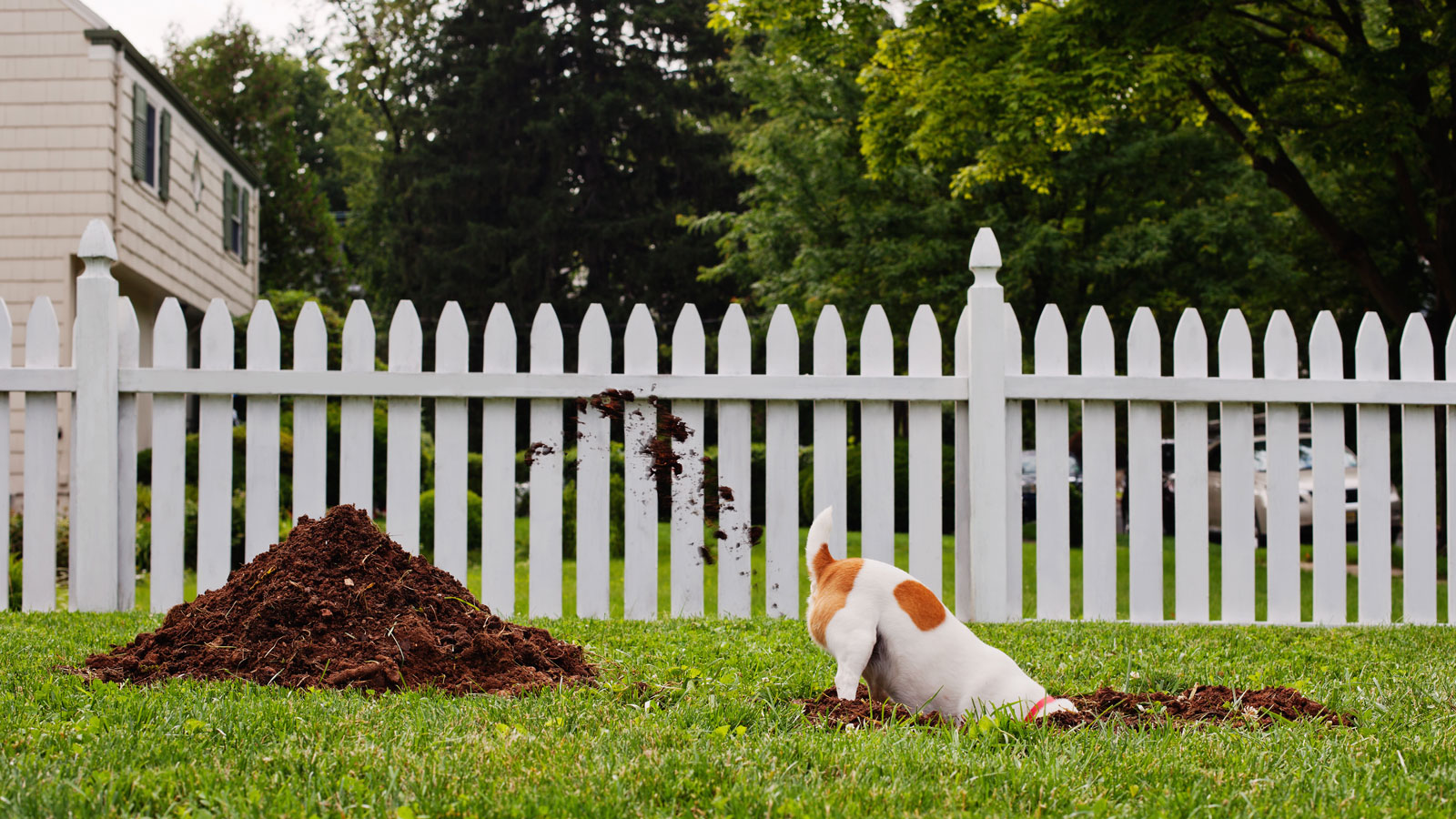
If you're a dog owner you'll know the garden is one big adventure playground for your pet, offering the perfect opportunity for exploring nature, having a good roll on the lawn, and investigating the flower beds. My dog is with me every minute I'm out in the garden, and it's definitely her favourite place to be.
I want to create a dog-friendly design that's a beautiful space that I'll enjoy just as much as my pet does, and I'm sure the same goes for you too. Keeping your dog safe is top of the list too, as there's lots of potential for mischief, whether that's eating plants they shouldn't, digging holes in the lawn or getting into trouble in the shed.
Dog-friendly garden design is big news this summer, what with Monty Don's new design for the RHS Chelsea Flower Show, so I decided to look into the best garden ideas for dogs to share with you so you too can create a space you can enjoy together with your pet.
1. Choose dog-friendly plants
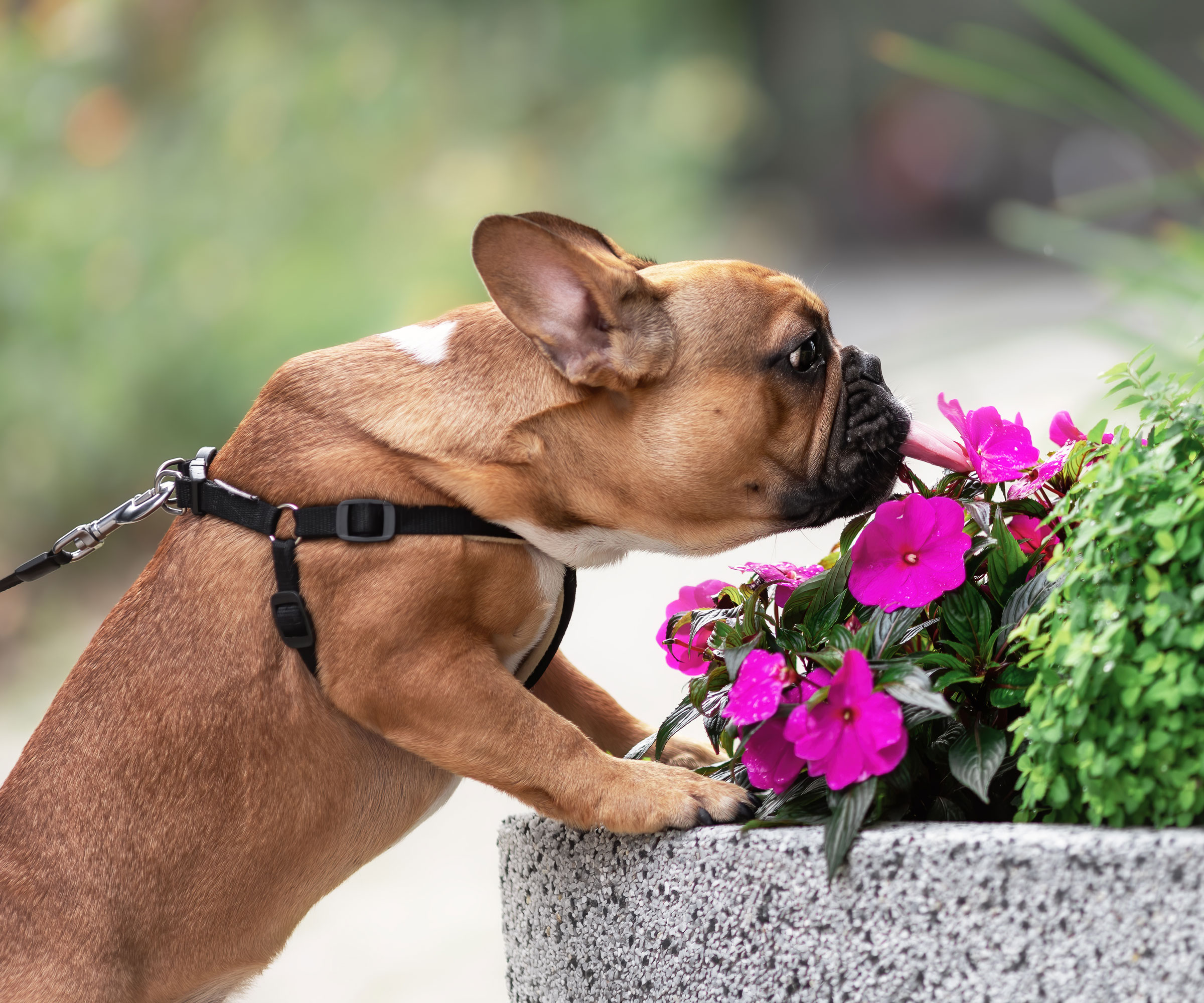
Anyone who has watched their dog sniffing flowers and brushing through plants will know about the sensory benefits of plants for dogs. There is nothing more lovely than watching my own dog daydreaming in the garden as she noses around among the flowers, so I'm a big fan of sensory garden ideas.
"Whether it’s the joy of sniffing through flowers, herbs and foliage, rolling around on the lawn or digging in a dedicated sandpit, a few simple changes can turn an ordinary garden into a sensory haven for dogs," agrees Hannah Wright, dog behaviour expert at Guide Dogs. "By embracing their natural behaviours, you can create an environment where dogs will thrive.”
Creating a truly dog-friendly outdoor space means incorporating different textures, scents, and interactive elements. "Lavender, freesia and sunflowers are all dog-friendly flowers to have in the garden, as well as herbs such as rosemary, oregano and thyme," says Hannah. "Sniffing flowers can be beneficial as your dog is engaging receptors in their brain, and driving mental stimulation, which is so important for wellbeing."
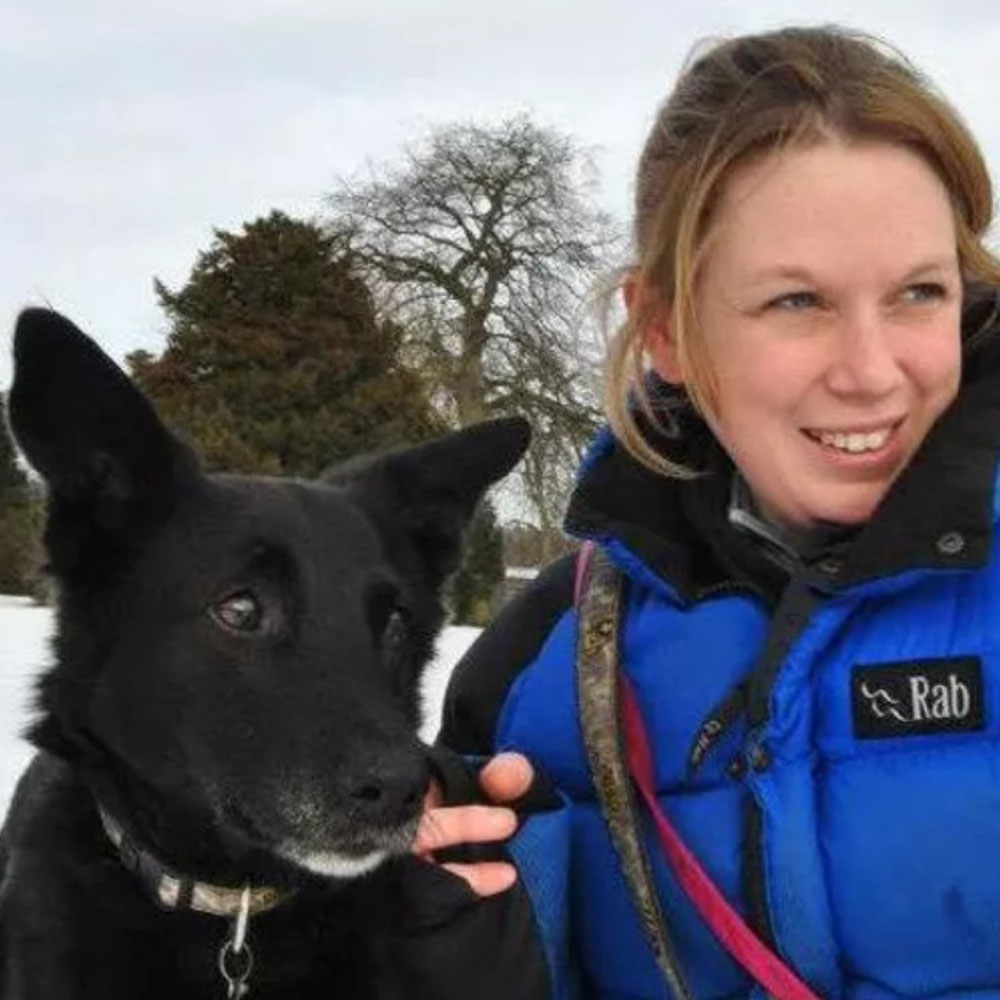
Hannah Wright is the Guide Dog Programme Lead at Guide Dogs, where she ensures the effective, ethical delivery of the charity’s services. With a PhD in dog behaviour and a strong background in research, practice, and charity operations, Hannah brings a science-led, but practical perspective to guide dog training. She is a Certificated Clinical Animal Behaviourist and continues to contribute to academic teaching and professional standards in the field.
2. Be aware of plants that are toxic to dogs
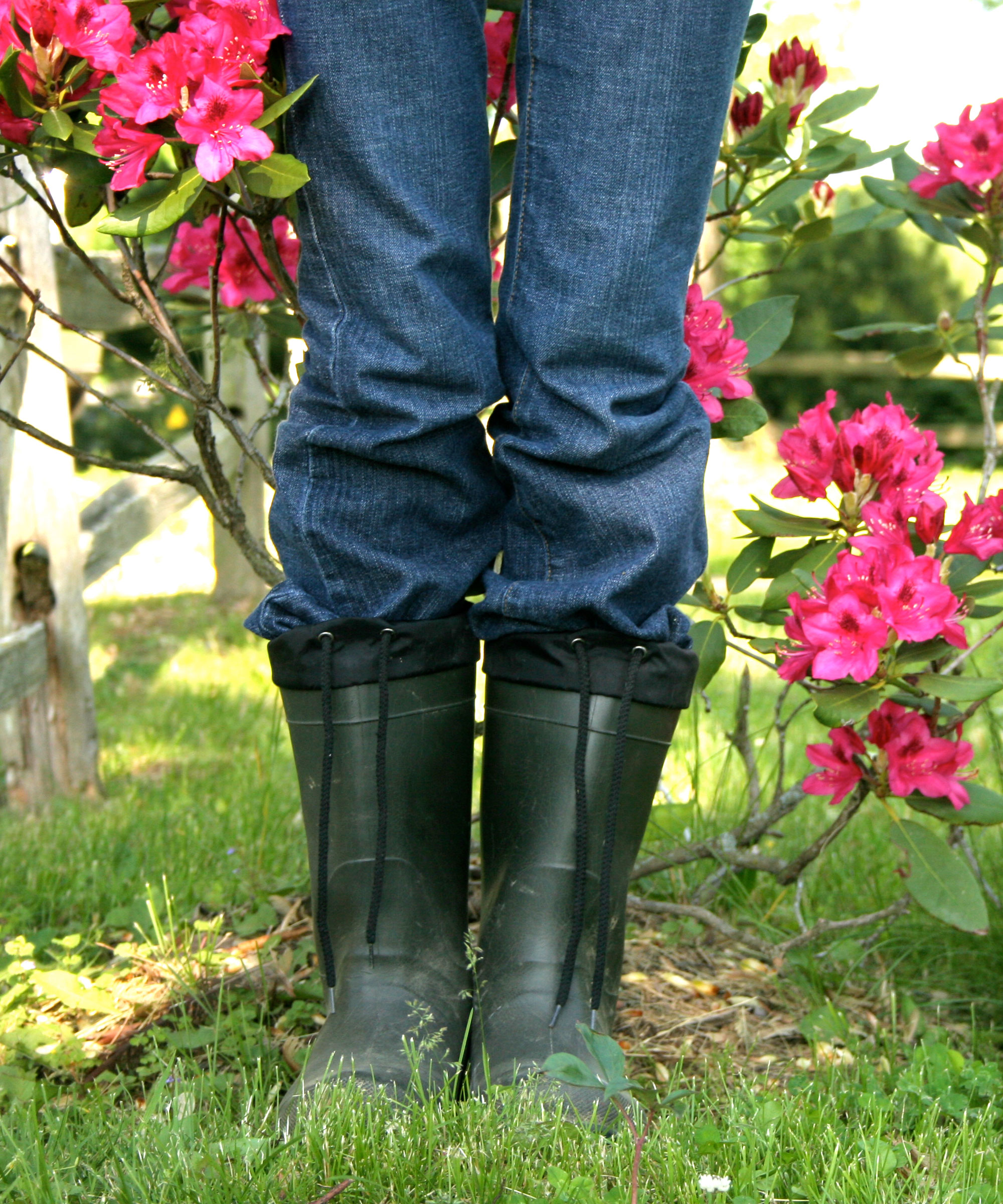
“There are a few things to consider when picking flowers, bulbs and seeds to plant in your garden when you have pets, most importantly, toxicity," says Jen Wormleighton, veterinary expert at Animal Friends.
Bring your dream home to life with expert advice, how to guides and design inspiration. Sign up for our newsletter and get two free tickets to a Homebuilding & Renovating Show near you.
Some of the most common flowers can be harmful and potentially deadly for our dogs. "Ensure your dog does not eat daffodils, tulips, bluebells, lilies, ivy, crocuses and especially rhododendrons," adds Jen. "If your pet does ingest any of these toxic plants, or any others that you are unsure about, consult your vet immediately. Even if you didn’t see them eat the plant but they are behaving unusually, or you did see them but there are no side effects, you must act quickly.”
There are many plants that are poisonous for dogs so it's a good idea to familiarise yourself with what's on the list to keep your pet safe. While some might simply cause an upset stomach, others can lead to more serious problems, especially if they’re eaten in large amounts.

Jen Wormleighton is a member of the Royal College of Veterinary Surgeons and has in depth experience working for a large pharmaceutical company since leaving veterinary practice, providing expert discussion on animal medicine. As the Head of Veterinary Services at Animal Friends, Jen takes great pride in her role, making positive contributions to animal health and welfare.
3. Offer plenty of fun activities in the garden
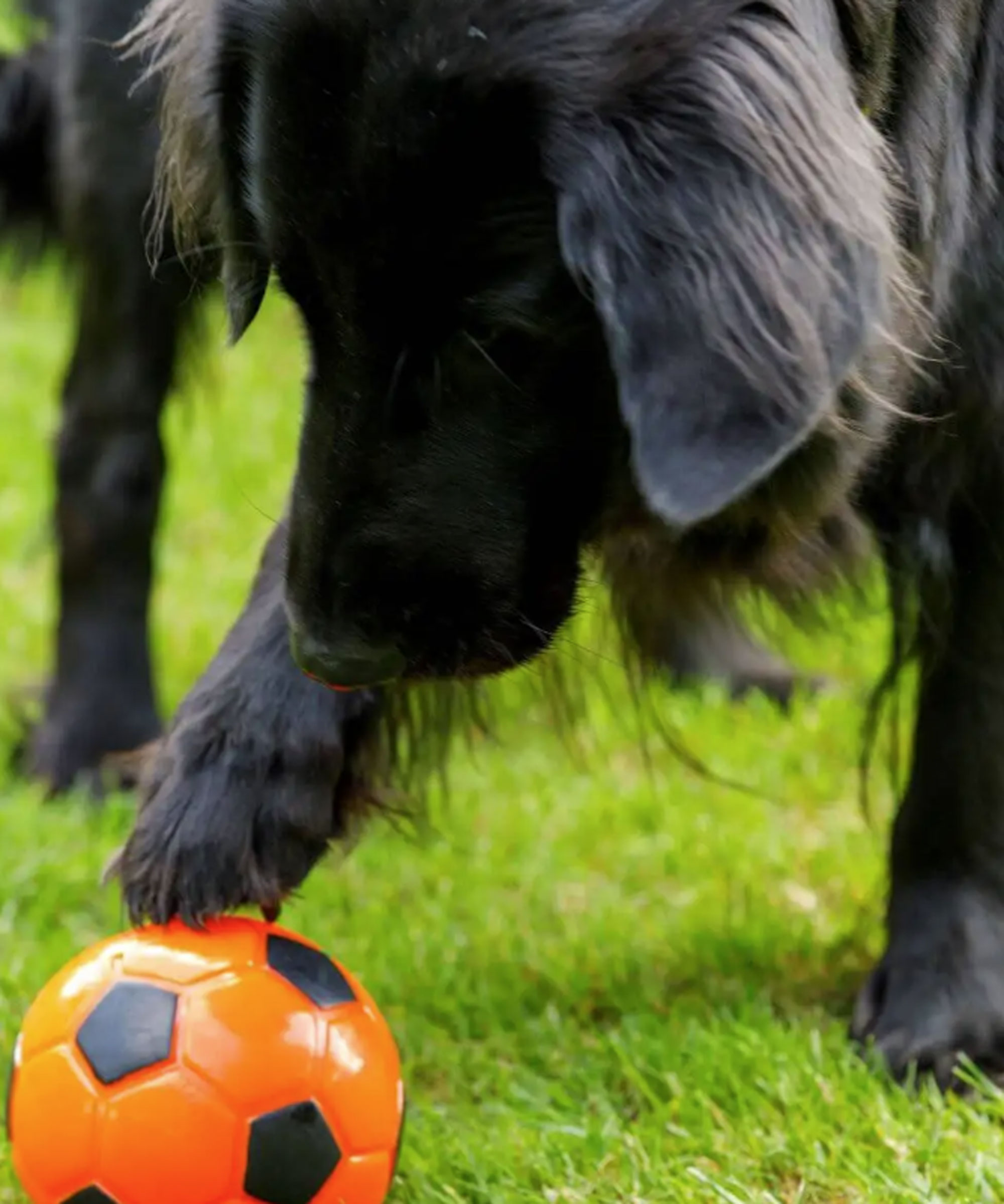
Prevent active dogs from getting bored and give them a mental workout by making sure there are plenty of toys around as a key part of your garden ideas for dogs. I like to give my dog a toy like this Seriously Strong Football Treat from Amazon, and watch her work out how to solve the puzzle. Plus it's good for working on her ball skills.
"Dogs need space to run and dig," says landscaping expert Loren Taylor and owner of Outdoor Fountain Pros. "I set aside a patch of grass for games of fetch and tag. Right next to it, I dig a shallow sand pit and hide toys or treats so dogs have a safe place to dig instead of my flowerbeds."
Loren suggests a thick rope tied to a post for playing tug or a simple ball launcher to keep dogs busy for hours. Adding a few garden path ideas such as using bark or smooth stones gives new smells and textures that dogs love to explore.

Loren Taylor is an expert in gardening and landscaping design. As the owner of Outdoor Fountain Pros, he has spent 17 years honing his craft, transforming outdoor spaces into serene, beautifully landscaped environments.
4. Keep dogs cool during hot spells
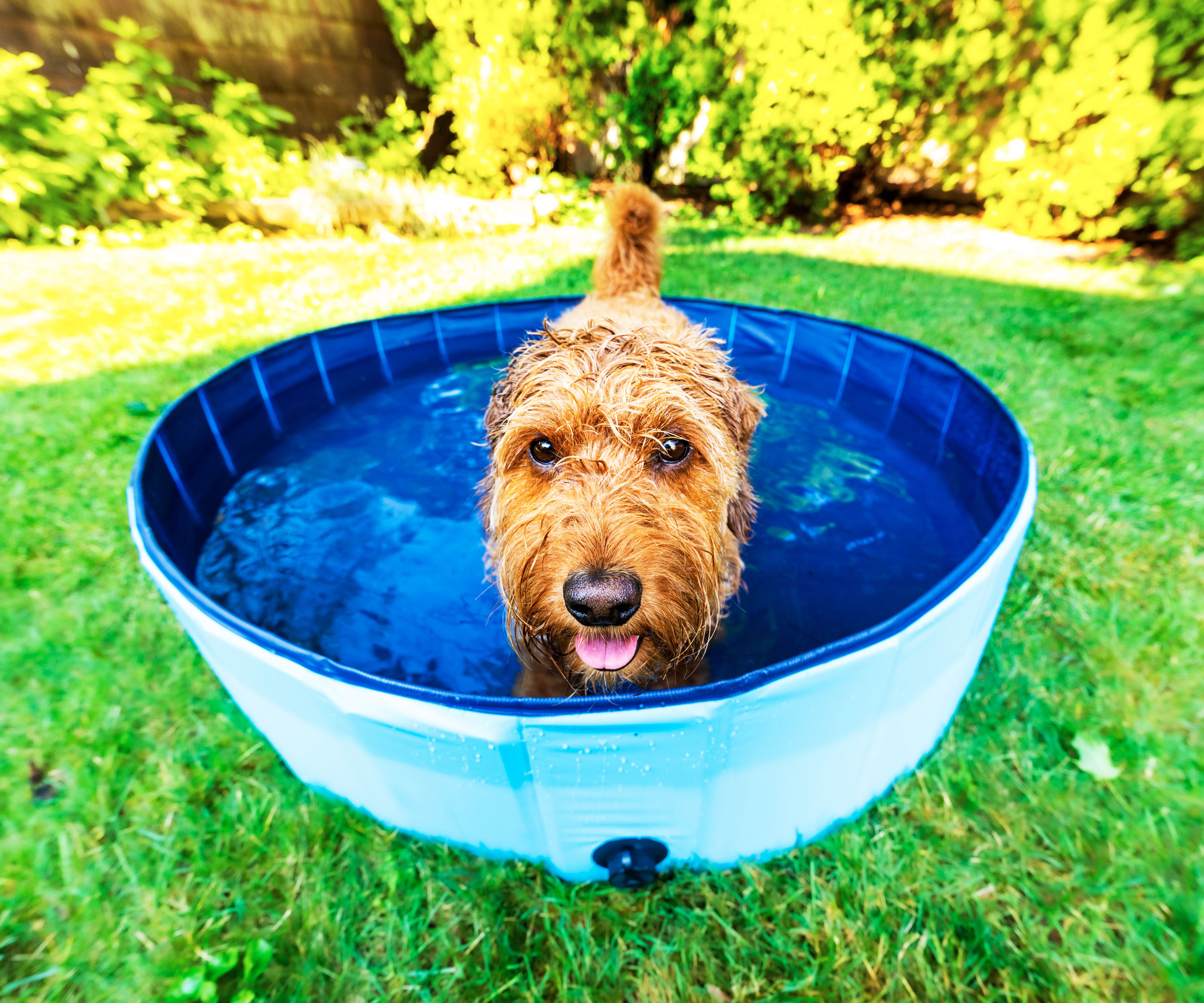
Keeping my dog cool in summer can be hard, especially as she likes to be out in the garden with me at all times, and has no concept of staying in the shade. In fact, given the chance she loves to bask in the sun.
“Any breed can suffer from heatstroke and it can happen at any time of day," says vet Jess Simmonds. "It's also important to stay alert on slightly cooler days when we can underestimate the temperature. To keep your dog cool in the garden, wet their ears and paws every now and again with a small amount of water."
Jess also suggests freezing dog treats in ice cubes for a fun reward. Paddling pools set up in the shade are also a great alternative to walks in the sun and just as mentally stimulating. Choose from a range of products, such as this cooling gel dog mat from Amazon, which are widely available.
"Regularly grooming your dog will remove loose fur and help to keep your dog cooler," adds Jess. "Finally, hydration is absolutely vital. You can even add a little chicken stock to your dog’s water bowl to encourage them to drink. If you have any concerns that your dog may be suffering from heatstroke, contact your vet as soon as possible.”
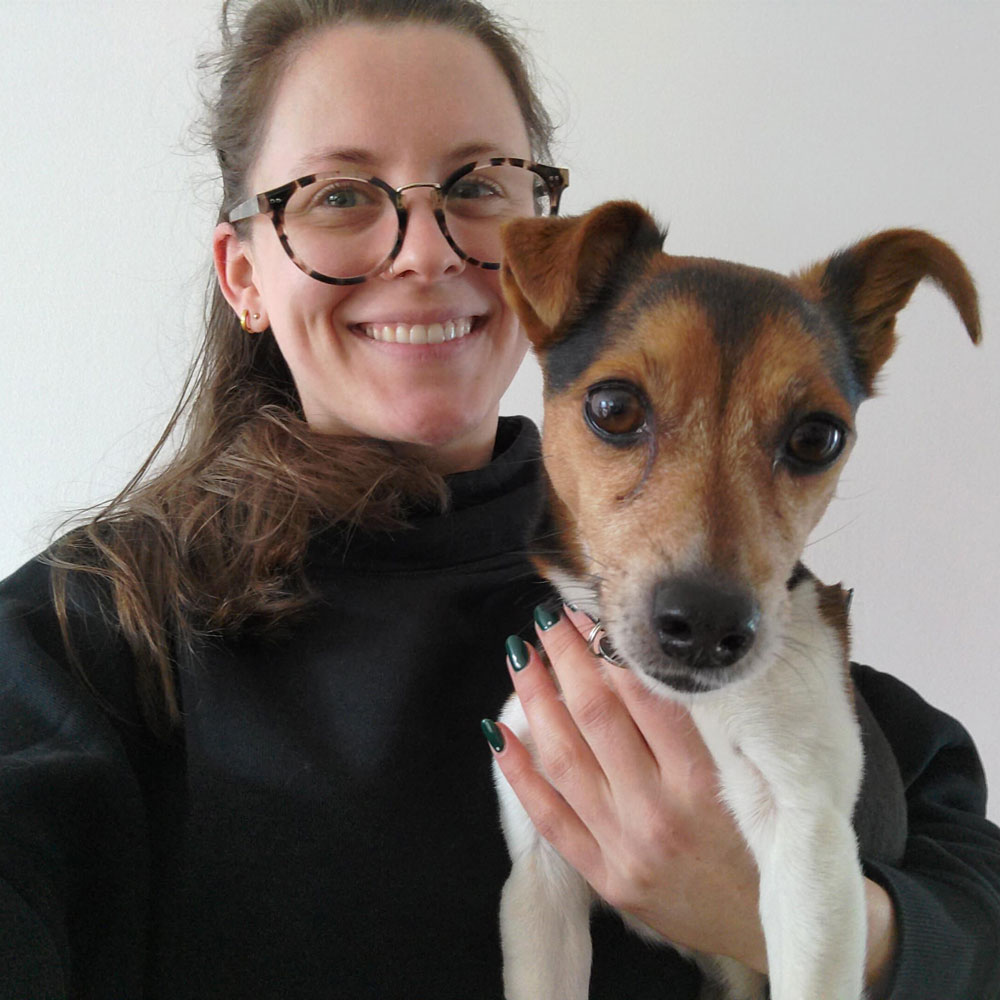
Jess Simmonds qualified from the University of Glasgow Veterinary School in 2016, and has an MSc degree. She has experience in farm and companion animal first opinion practice, as well as clinical skills teaching. Her current role is prescription operations manager with Animed.
5. Lock up compost and chemicals
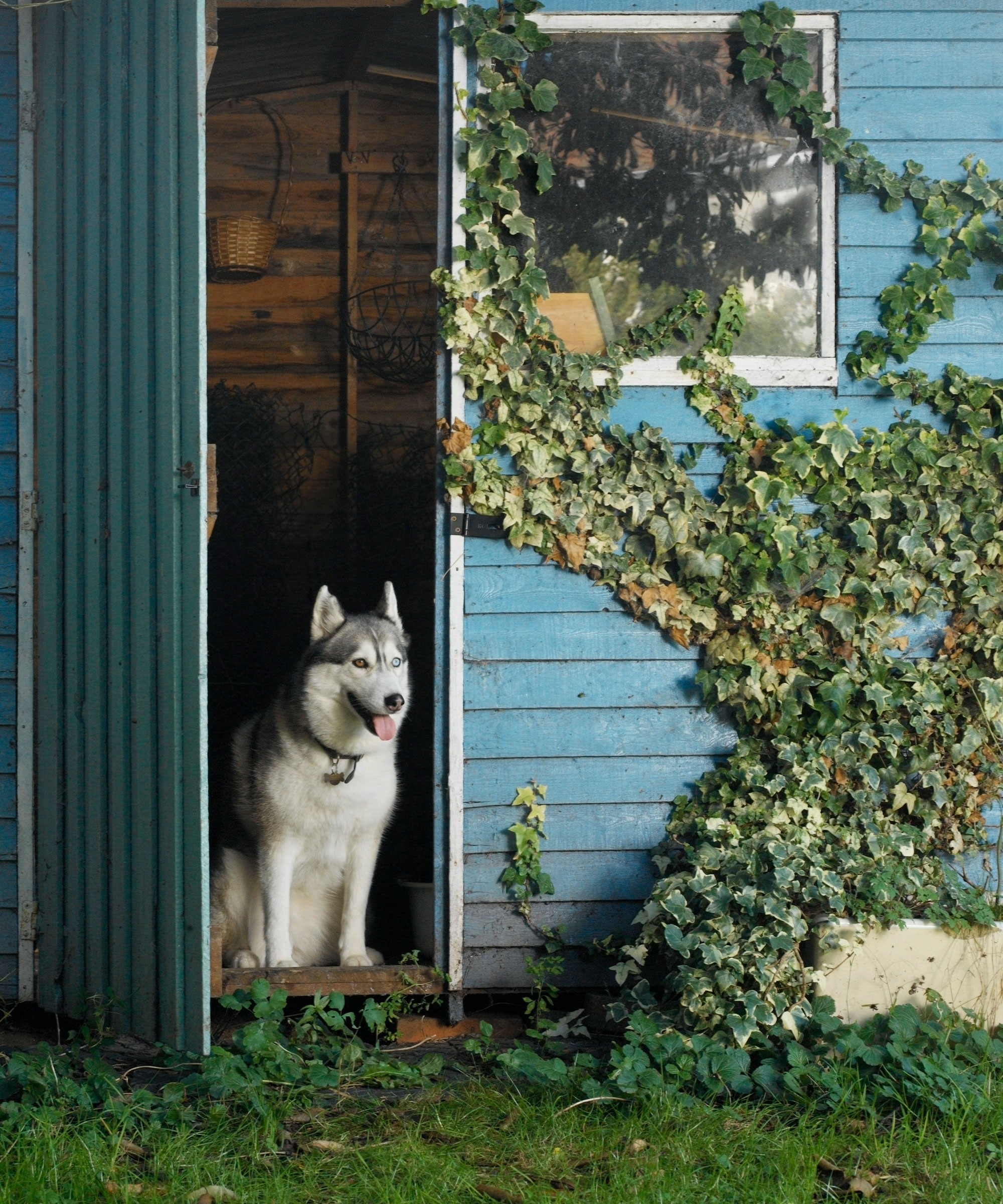
I once used a lawn feed that was supposedly pet friendly but it made my dog's paws sting, so I think it's best to keep your dog out of the garden until any product is well absorbed and watered in. Now I keep any products that might be harmful to dogs on a high shelf in the shed, as well as any bulbs or seeds they might take a fancy to.
"Garden chemicals, such as weedkillers and pest killers, present a danger to pets if swallowed or exposed to their skin," says veterinary expert and Petplan spokesperson Dr Brian Faulkner. "It's imperative that you keep gardening products out of your dog's reach, and be careful where you use chemicals in the garden."
Always supervise your dog outdoors and watch for any signs of poisoning, says Brian. "These can include tiredness, foaming at the mouth, twitching or shaking, being off their food, sickness and diarrhoea. If their behaviour changes, seek help from your vet."
Some other gardening products that can also affect dogs if ingested include compost as this can contain harmful toxins, as well as fertiliser and lawn feed as mentioned, which can cause sickness and diarrhoea. So keep that shed firmly shut!
Find out everything you need to know about pet proofing your home with Petplan's guide.

Petplan veterinary expert Brian Faulkner has worked as a clinician for over 30 years. He is an Associate Professor of Nottingham Veterinary School and Past President of the UK Society of Practising Veterinary Surgeons. He is a regular speaker at all the main veterinary conferences and has coached hundreds of veterinary colleagues through his work as a consultant.
6. Take a tough approach with the lawn
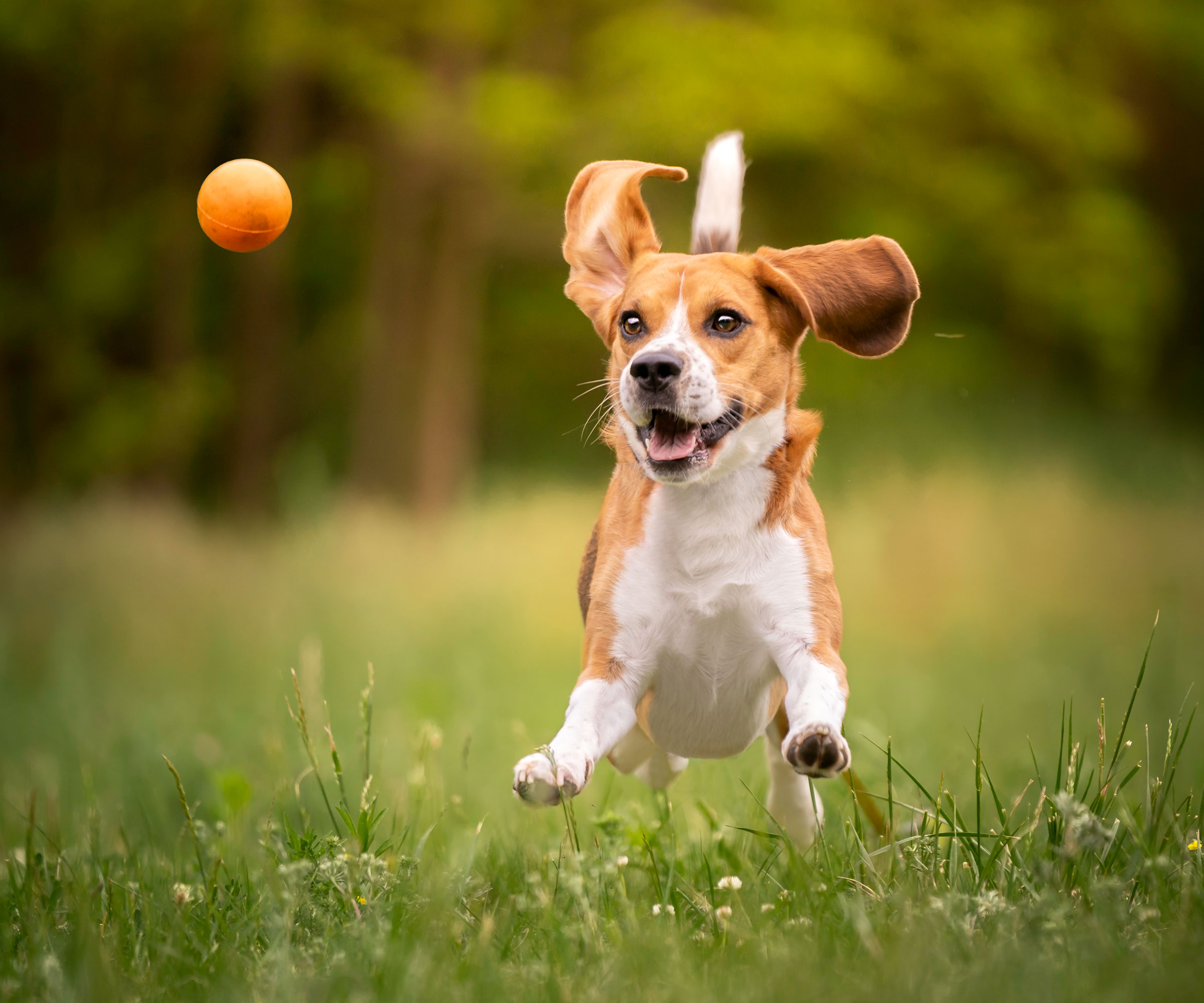
I always make sure I take my dog for her morning walk before letting her out in the garden. Dog urine is high in nitrogen, which can scorch grass and leave yellow patches, particularly from female dogs. This goes some way towards helping the lawn stay green and reducing unsightly patching.
From digging holes in lawns to wear and tear from constantly retrieving balls, dogs can inflict a lot of damage that leaves turf looking less than ideal. If you have an energetic dog that loves to play it's best to opt for tough grass species like dwarf perennial rye or smooth-stalked meadow grass as part of your garden ideas for dogs, as they tend to be more hard-wearing.
Try a product like Tuffgrass by Johnsons Lawn Seed, available here from Amazon, which helps maintain a lush, green garden that's both durable and pet friendly. It can be sown like any standard lawn seed in spring or autumn, or used to overseed existing lawns to introduce patch resistance gradually.
Alternatively you can let nature take over. The lawn for Monty Don's RHS and BBC Radio 2 Dog Garden at Chelsea this year will feature daisies, dandelions and clover. These stalwarts of the garden will go far in improving the hardiness of anyone's lawn.
7. Give your dog a shady space to rest
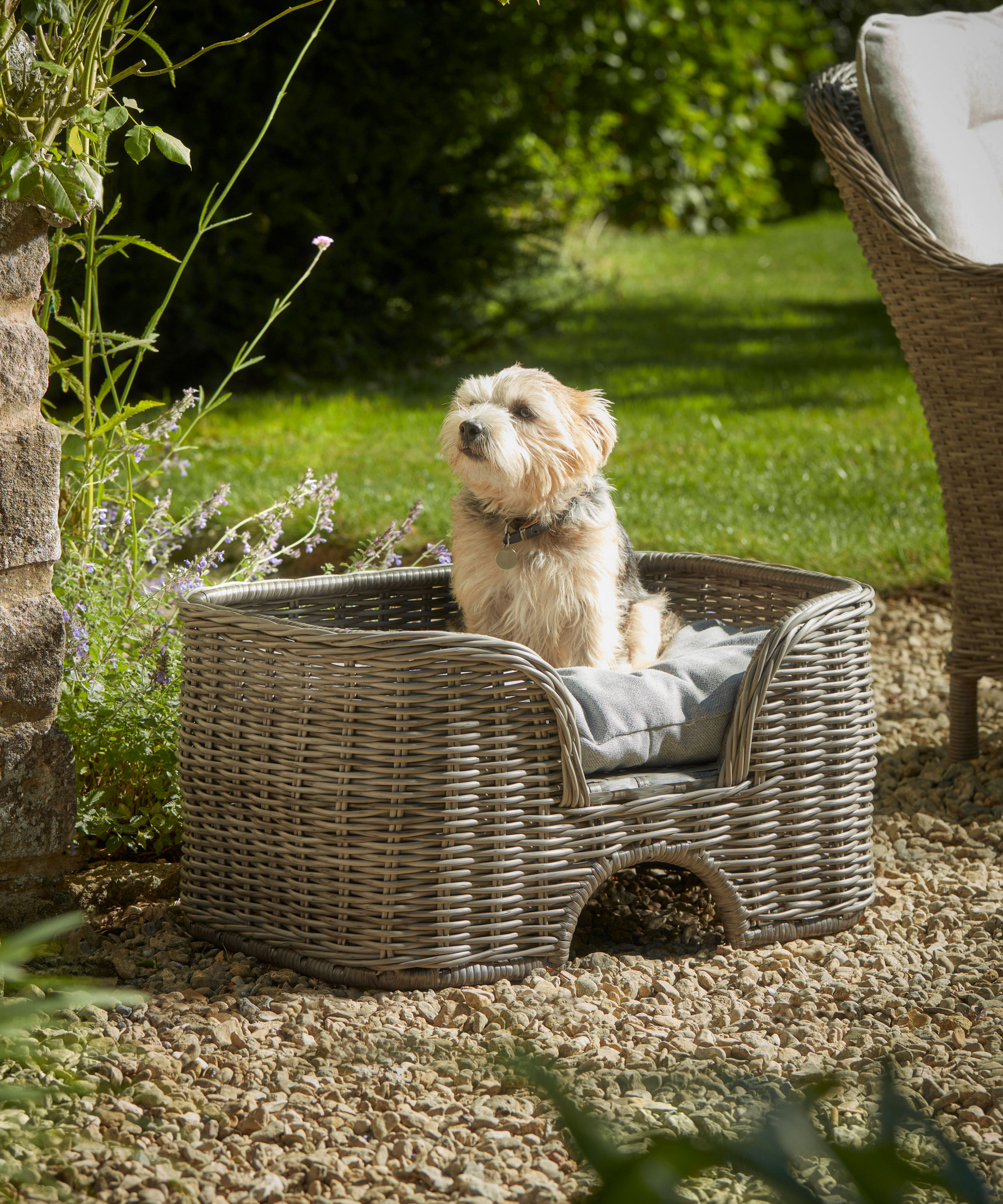
Providing a cool and comfortable place for your pet to retreat to in summer is important as part of your garden ideas for dogs. A covered pergola, sail shade or dedicated doggie shelter such as a kennel offers a relaxing retreat out of the sun.
Many dogs, particularly older ones or those with separation anxiety, will rest easier if you take their dog bed outside, which means you get on with your gardening jobs while they can see you rather than being stuck indoors. The good news is you can get indoor-outdoor pet beds that look good too, like this lovely Deorsa Petbed from Cox & Cox, as pictured here.
In hot weather, be sure to keep bowls topped up with plenty of fresh, cool water to keep your dog hydrated. Keep water bowls out of the sun and top up with fresh ice cubes regularly.
8. Create a designated dig zone
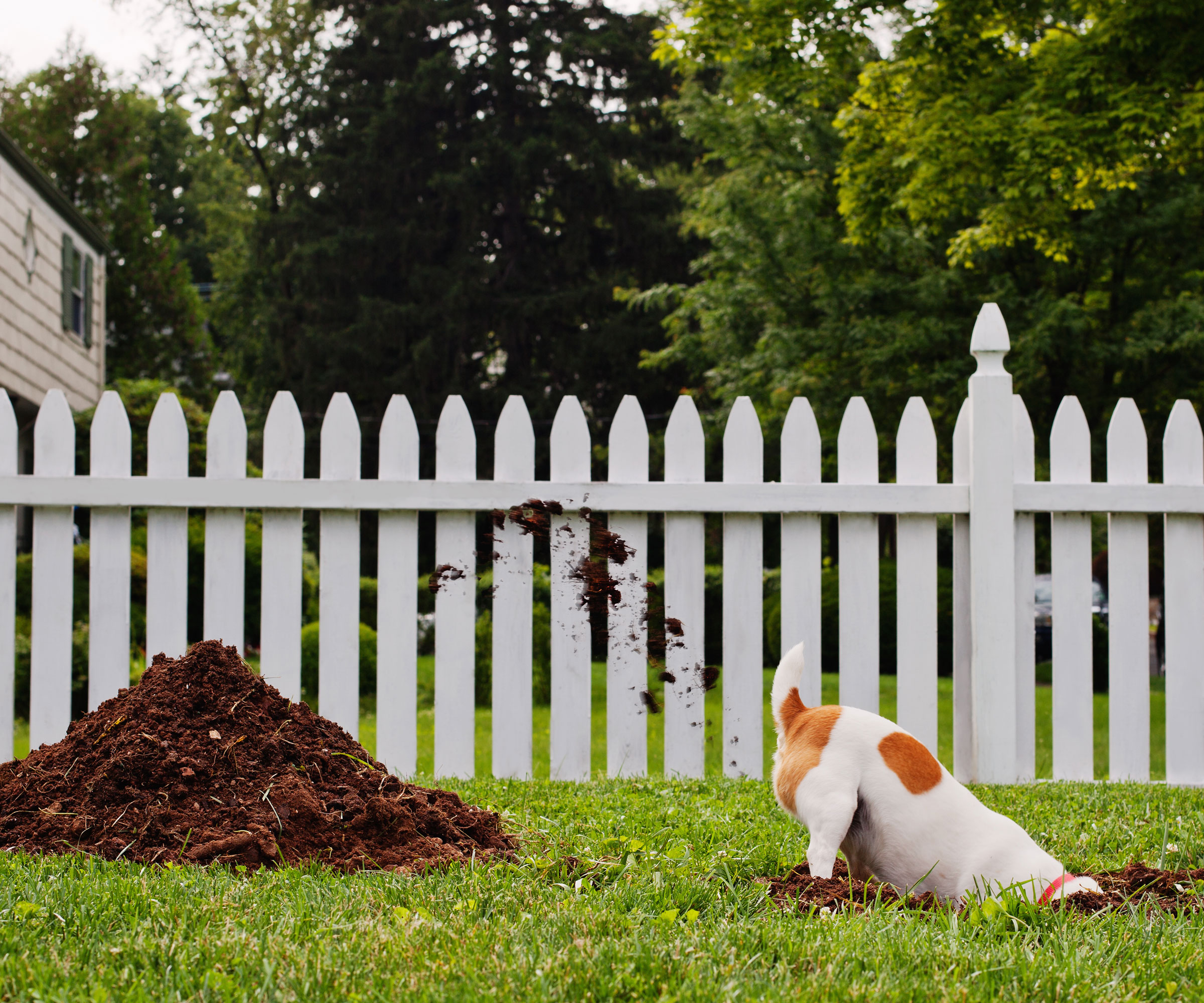
My dog is super creative when it comes to hiding treats in the garden. She will climb on top of a container, dig frantically so the plant and compost goes flying, then bury her treat, pushing it in with her paw and even making an attempt to backfill with soil to hide it.
This is why I love the idea of a designated dig zone instead of my planters being trashed.
"Dogs have an impulse to dig due to high energy levels and the urge to explore smells," says Jamie Shipley, gardening expert and MD of Hedges Direct. "I recommend having a specific space where you allow your dog to dig in your garden. Not only are you providing an outlet for this behaviour but you are also preventing damage to the rest of your garden."

Jamie Shipley is currently managing director at Hedges Direct, a position he has held since 2018. He has extensive knowledge and experience of the horticulture and landscaping industries.
9. Watch out for slugs and snails
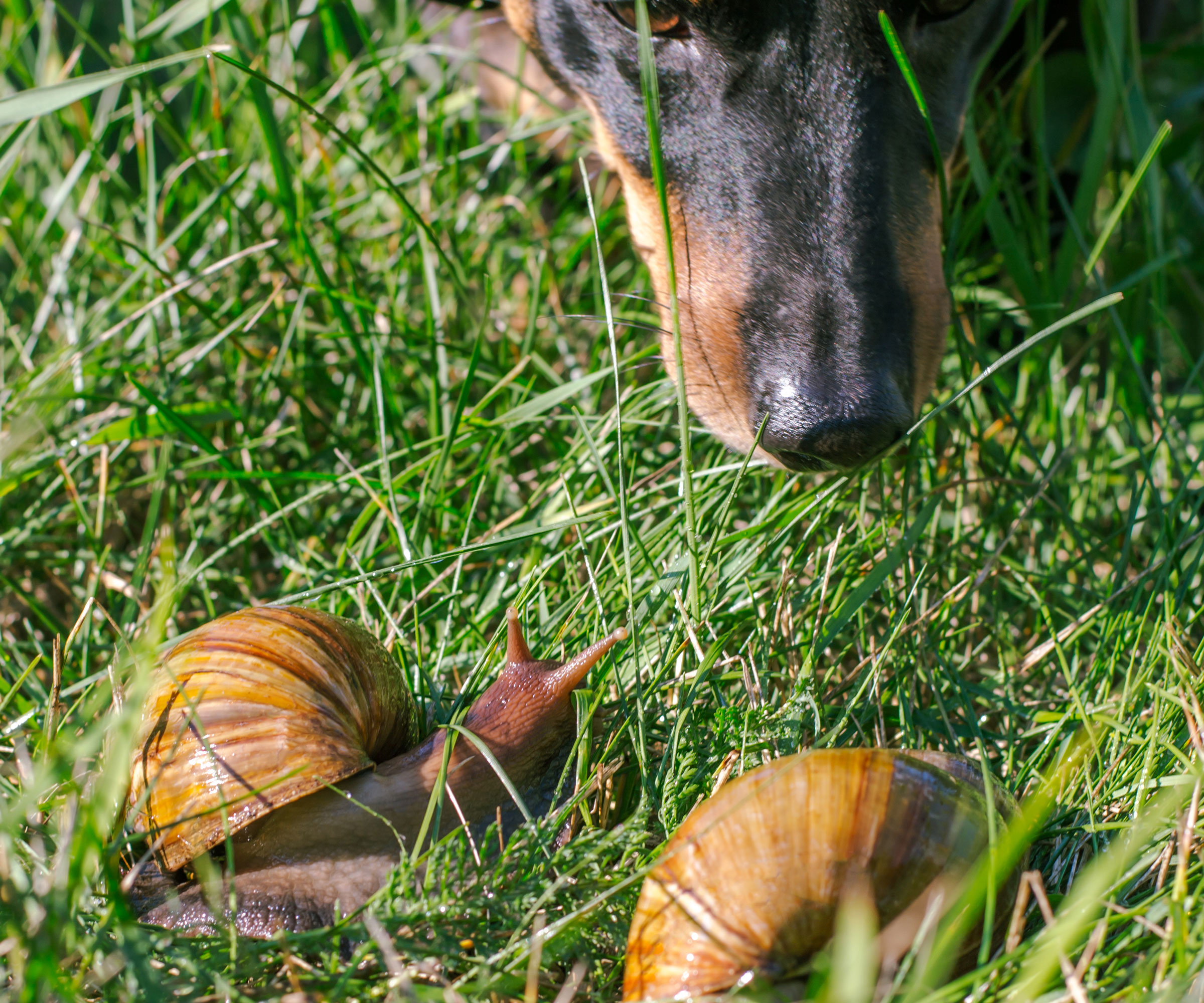
I have always known that dogs should stay away from slugs and snails but I've just discovered there's a scientific reason why. A parasitic infection called angiostrongylosis, which is found in snails and slugs, can be harmful to dogs if they eat them.
"These pests can be toxic to your pet," explains Jamie Shipley. "Natural solutions to deter them like copper tape or eggshell barriers, beer traps, and encouraging natural predators offer no risk to your pets. Pet-safe tactics like handpicking, changing watering schedules [it's better to water your plants in the morning], and applying natural repellents such as coffee grounds or garlic will protect your pets while efficiently managing pests."
If your dog consumes a slug or snail, watch their behaviour and call your vet if you are worried. "Be on the lookout for symptoms such as vomiting, diarrhoea, or tiredness," adds Jamie. "Your vet can advise you on the next measures to take, as well as potential treatments."
9. Learn to spot hay fever symptoms in your dog
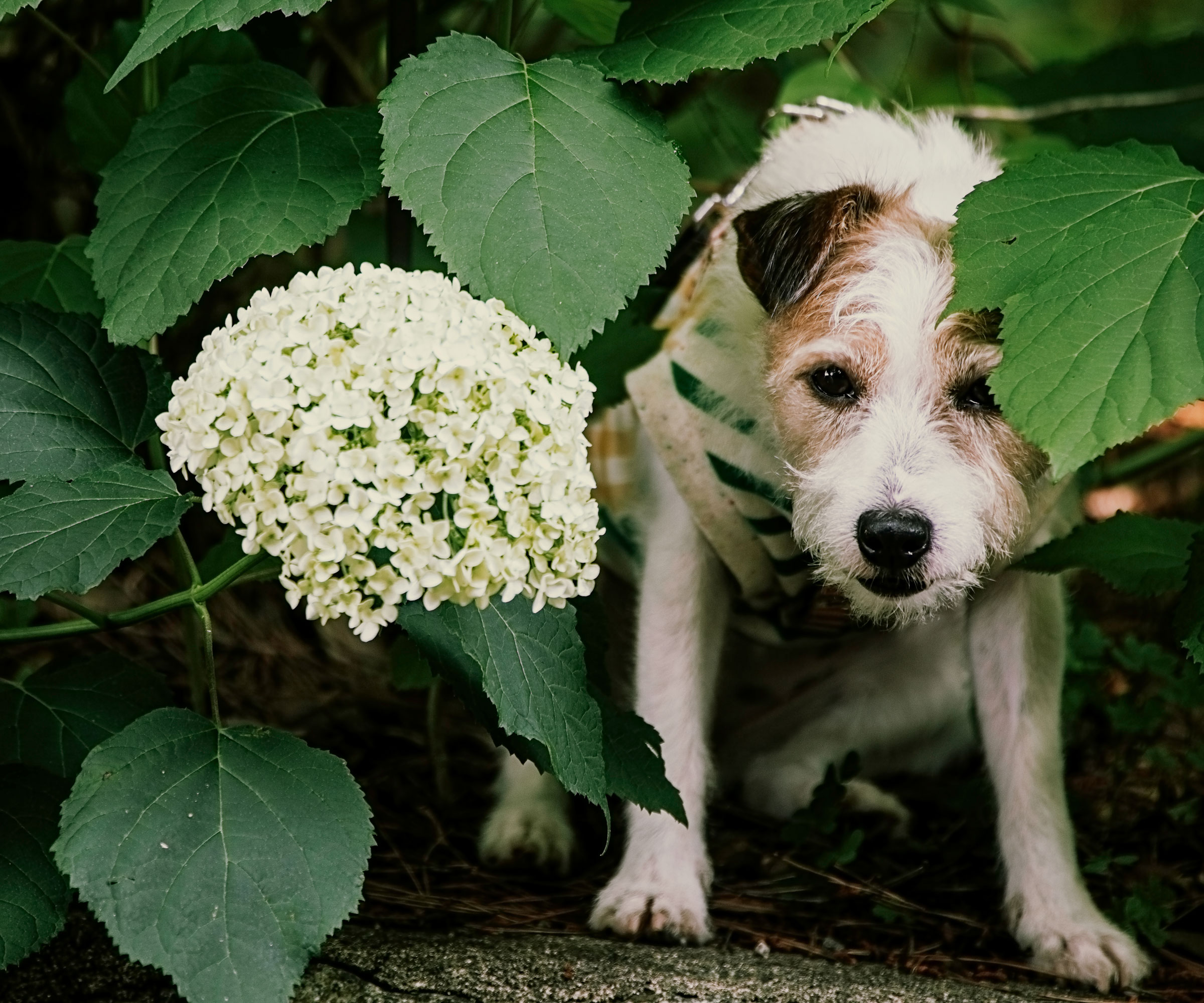
“Dogs can suffer from hay fever just like us, and with pollen levels expected to be higher this year, it's important to be aware of the signs and take action to keep your dog comfortable," says Darren Beale, CEO of dog nutrition company Years.com. “Dogs can experience similar symptoms to humans such as a runny nose, watery eyes and sneezing, but some may only develop a rash on their paws or face which can be easily overlooked."
According to Darren, breeds that are more prone to hay fever include Dalmatians, Poodles, Schnauzers, West Highland Terriers, and Irish Setters.
Vets can prescribe nasal sprays, eye drops and topical treatment to help alleviate symptoms, but there are also things you can do to minimise your pet’s exposure to pollen. Avoid going outside when pollen count is at its highest. Groom and bathe your dog more often to remove pollen from their coat, wash their bedding more frequently, and find out how to cut long grass cut to keep it trimmed.
If you suspect your dog is suffering from hay fever, see your vet for expert advice.
10. Build an agility course
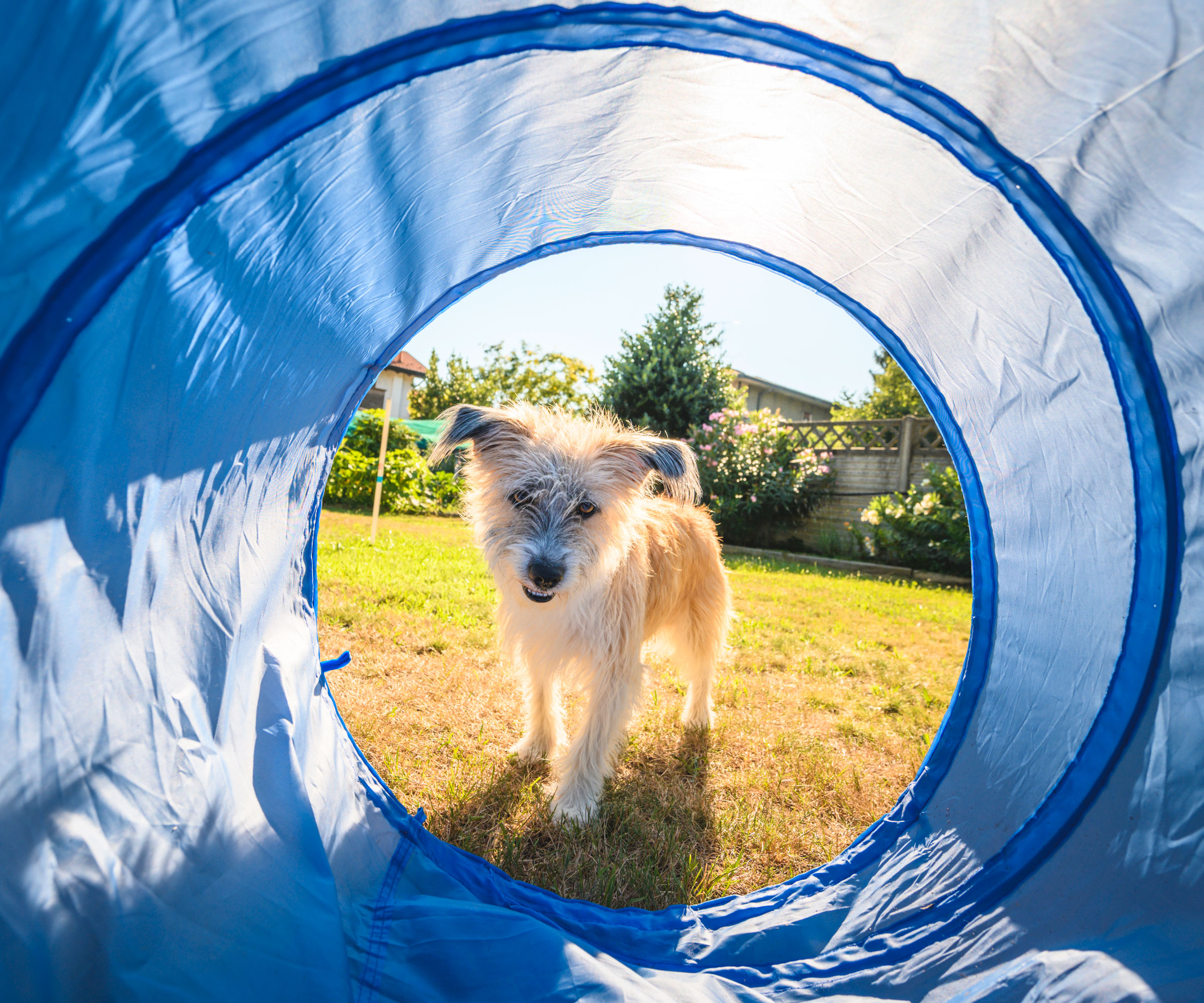
If you are lucky enough to have a decent sized garden why not add a simple dog agility course for your pet to enjoy as part of your garden ideas for dogs. It will also improve their fitness by increasing activity levels, and in a fun way.
Push a few plastic poles in the ground for your dog to weave in and out of, rest two boards on low bricks to create a ramp, and add low hurdles made from PVC pipes. You can also add a children’s play tunnel for fun.
Start with easy tasks, showing your dog how to use the course. Give plenty of treats and encouragement, and your dog will soon love the challenge. Crufts here we come.
That's a wrap on garden ideas for dogs. Now find out how to design pet-friendly homes that humans will love too!

Lifestyle journalist Sarah Wilson writes about garden design and landscaping trends. She has studied introductory garden and landscape design, and also has an RHS Level 2 qualification in the Principles of Plant Growth and Development. Sarah is a regular contributor to Homes & Gardens and Livingetc, and has also written for Modern Gardens, Country Living, and Country Homes & Interiors magazines.
